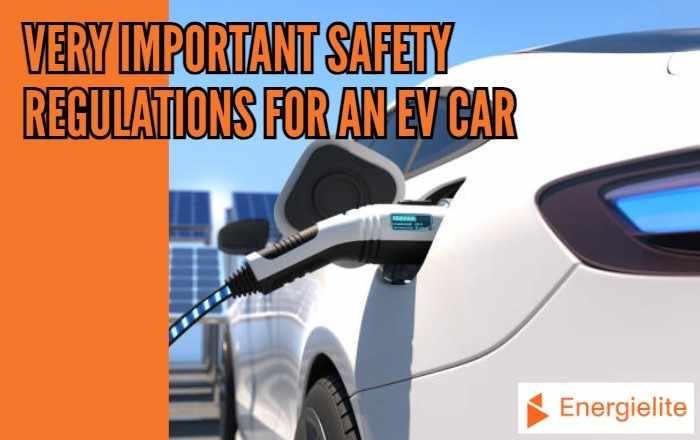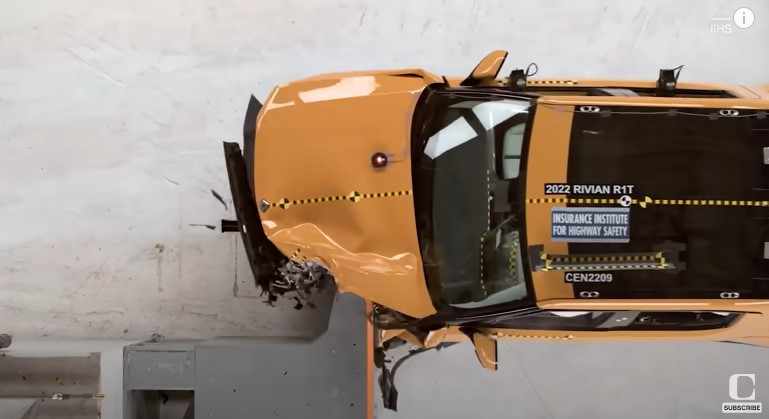
If you’re thinking about purchasing an electric vehicle, you might have safety concerns. Fortunately, electric cars have excelled in crash tests, achieving the highest recorded scores. This signifies that electric vehicles currently rank as the safest options in the market.
Unlike gasoline, which is highly flammable and can lead to post-accident fires, electric vehicles have a significantly lower risk of fire due to their unique power source. Despite some skepticism stemming from the newness of the technology, electric vehicles are actually safer than traditional combustion engine vehicles.
In this article, we’ll delve into the safety benefits of electric cars and highlight key safety considerations for these vehicles.
Key Takeaways
- Electric vehicles have aced crash tests, achieving the most remarkable scores ever recorded, solidifying their position as the market’s safest vehicles.
- Electric vehicles present a reduced risk of fires compared to traditional combustion engine vehicles, thanks to their distinct power source.
- Even though doubts may arise due to the novelty of the technology, it’s important to note that electric vehicle safety surpasses that of traditional combustion engine vehicles.
Enhanced Safety and Lower Fire Risk in Electric Vehicles

Concerns often arise regarding the fire risk associated with electric vehicles. Yet, in reality, the likelihood of a fire occurring in an electric vehicle is significantly lower than in a gasoline or diesel vehicle. To put it in perspective, electric vehicles have a fire risk that is four times less than that of combustion engine vehicles.
Electric vehicles are equipped with safety features to prevent fires. These include automatic cooling systems to control cell temperatures, a firewall system to contain potential fires, and multiple layers of protection for lithium-ion batteries, reducing the risk of thermal runaway, a common cause of battery fires.
To minimize the risk of fire, it’s crucial to adhere to safe charging practices. This involves utilizing certified charging equipment and having a qualified electrician install the charging connector. Additionally, it’s essential to steer clear of overcharging and overheating the battery pack. The vehicle’s battery management system plays a vital role in monitoring and maintaining safe battery power levels and operating temperatures.
In summary, electric vehicles incorporate numerous safety measures to avert fires, significantly lowering the fire risk compared to traditional combustion engine vehicles. By adhering to safe charging practices and proactively managing the battery system, you can further diminish the fire risk in your electric vehicle.
Enhance Driving Safety

Electric vehicles offer enhanced safety through a combination of factors. Firstly, their lower center of gravity, thanks to battery placement, results in superior weight distribution across the axles, enhancing stability and cornering grip, thereby reducing the risk of rollovers. Moreover, the electric powertrain’s instantaneous torque provides quicker responses in potential emergencies, enhancing driving safety.
Furthermore, manufacturers like Tesla, NIO, Audi, Hyundai, and Volkswagen continually enhance safety features in their electric vehicles, encompassing accessibility, powertrain, wiring, and headlights. Regulatory bodies like the NHTSA also play a role in ensuring the safety of electric cars throughout their manufacturing and testing processes.
What Happens in an Accident?

And Why Electric Cars Are Safer in Crash Cases?
Electric cars exhibit improved crash safety due to the absence of a bulky internal combustion engine. This absence enables manufacturers to create vehicles with more strategically designed crumple zones that effectively absorb crash energy.
Additionally, the placement of the electric motor on the vehicle’s ground floor reduces the likelihood of it penetrating the cabin in an accident, enhancing lateral crash resistance as well.
The National Highway Traffic Safety Administration (NHTSA) oversees the safety of all vehicles, including electric ones, within the United States.
NHTSA conducts comprehensive tests to assess vehicle safety, and notably, the Tesla Model S achieved the highest score ever recorded.
In Europe, every vehicle must undergo a crash test as part of the approval and homologation process, evaluating the potential injuries to occupants during a crash.
The Nissan Leaf achieved a groundbreaking milestone as the first electric car to earn a five-star rating in crash tests, signifying the lowest risk of injury to its occupants. Stringent safety standards mandate that electric cars adhere to the same safety requirements as conventional vehicles.
While electric cars carry a minor fire risk, it remains lower than that of gasoline and diesel cars. Notably, in the event of a crash, the high-voltage system is automatically deactivated by the car within seconds, ensuring that no residual voltage outside the battery remains to pose any injury risks.
To summarize, electric cars prioritize safety in their design, offering enhanced crash protection. They incorporate well-planned crumple zones for absorbing collision energy, and the electric motor’s positioning reduces the risk of intruding into the cabin during accidents.
These vehicles adhere to the same safety standards as traditional cars, ensuring the well-being of occupants and ultimately resulting in a lower injury risk compared to gasoline and diesel cars.
Without Electrocution Danger

Mitigating Electrocution Risks in Electric Vehicles
Concerns regarding the risk of electrocution in hybrid or electric vehicles are natural. Nevertheless, the likelihood of such an incident occurring is exceedingly low, akin to the risk associated with plugging in a hair dryer or charging a smartphone. Electric vehicles come equipped with safety mechanisms designed to safeguard passengers and first responders in the event of an accident.
Safety Measures in Electric Vehicles for First Responders

Electric vehicles are meticulously insulated and waterproofed, with batteries housed within shielded enclosures and high voltage cables clearly marked with bright colors. In the event of an impact, the system is designed to automatically cut off the electric current.
Manufacturers offer emergency response guides to first responders, providing crucial insights into the composition of EV components, particularly the most hazardous ones. This information is vital for preventing accidents or electrocutions during vehicle interventions.
Real-World Testing: The Japan Tsunami Case
A notable instance is the natural disaster in Japan during March 2011, which impacted over 20 Nissan LEAF vehicles. Remarkably, in each case, the vehicle components remained isolated and did not result in any accidents. This serves as compelling evidence for the efficacy of safety systems in electric vehicles.
In conclusion, electric vehicles come equipped with comprehensive safety systems designed to safeguard both passengers and first responders in the event of an accident.
These vehicles are meticulously insulated and waterproofed, and manufacturers supply emergency response guides to prevent potential accidents or electrocutions during vehicle interventions.
Better Braking System

Enhanced Braking Performance in Electric Vehicles
You might be aware that electric vehicles (EVs) incorporate regenerative braking systems, enabling them to recapture energy for recharging the battery. However, it’s worth noting that this system not only facilitates energy recovery but also enhances braking performance, ultimately prolonging the lifespan of brake discs and pads.
Regenerative Braking’s Impact on Stopping Distances
When you release your foot from the accelerator pedal, the regenerative braking system initiates a gradual deceleration, meaning the vehicle begins slowing down even before you engage the brake pedal.
This results in a reduced stopping distance during emergency situations, contributing to the enhanced safety of electric vehicles compared to conventional combustion engine cars.
Cost-Effective Maintenance with Regenerative Braking
Furthermore, the reduced requirement to apply the brake pedal significantly extends the lifespan of brake discs and pads, leading to more cost-effective vehicle maintenance and ensuring better brake performance during critical situations.
Maintaining Regenerative Braking Systems
Maintaining the peak performance of the regenerative braking system necessitates adhering to recommended practices for routine maintenance and repair.
Consistent maintenance serves the vital role of identifying potential system issues, thereby averting the need for expensive repairs in the future.
Overall, EVs have many common safety features with traditional combustion cars, but the regenerative braking system is a unique advantage that increases safety even more.
So, next time you’re driving an EV, remember that the regenerative braking system is not only good for the environment but also for your safety and wallet.
Frequently Asked Questions
What safety features do electric vehicles have?
Electric vehicles come equipped with several safety features to protect drivers and passengers. Some of these features include airbags, seat belts, anti-lock brakes, and traction control.
Additionally, electric vehicles often have advanced driver assistance systems (ADAS) that use sensors and cameras to detect and prevent collisions.
What are the most common safety concerns with electric vehicles?
One of the most common safety concerns with electric vehicles is the risk of fire. Lithium-ion batteries, which are used to power electric vehicles, can catch fire if they are damaged or improperly charged.
Another concern is the risk of electric shock, which can occur if someone comes into contact with the high-voltage components of an electric vehicle.
How do electric vehicles compare to gas-powered vehicles in terms of safety?
Electric vehicles are generally considered to be safer than gas-powered vehicles. This is because electric vehicles have a lower center of gravity, which makes them less likely to roll over.
Additionally, electric vehicles do not have a traditional engine, which means there is no risk of a fuel leak or explosion.
What are the best practices for maintaining the safety of an electric vehicle?
To maintain the safety of an electric vehicle, it is important to follow the manufacturer’s recommended maintenance schedule. This includes regular inspections of the battery and electrical system, as well as tire rotations and brake checks. It is also important to avoid modifying the electrical system or charging the vehicle with non-approved equipment.
What are the potential dangers of charging an electric vehicle?
Charging an electric vehicle can be dangerous if proper safety precautions are not taken. One of the main risks is the potential for electric shock, which can occur if the charging equipment is damaged or improperly installed. There is also a risk of fire if the battery is damaged or overcharged.
What are the safety standards that electric vehicles must meet?
Electric vehicles must meet a variety of safety standards to ensure they are safe for drivers and passengers. These standards include crash testing, fire safety testing, and electrical safety testing. Additionally, electric vehicles must comply with regulations related to the design and performance of their batteries and electrical systems.




